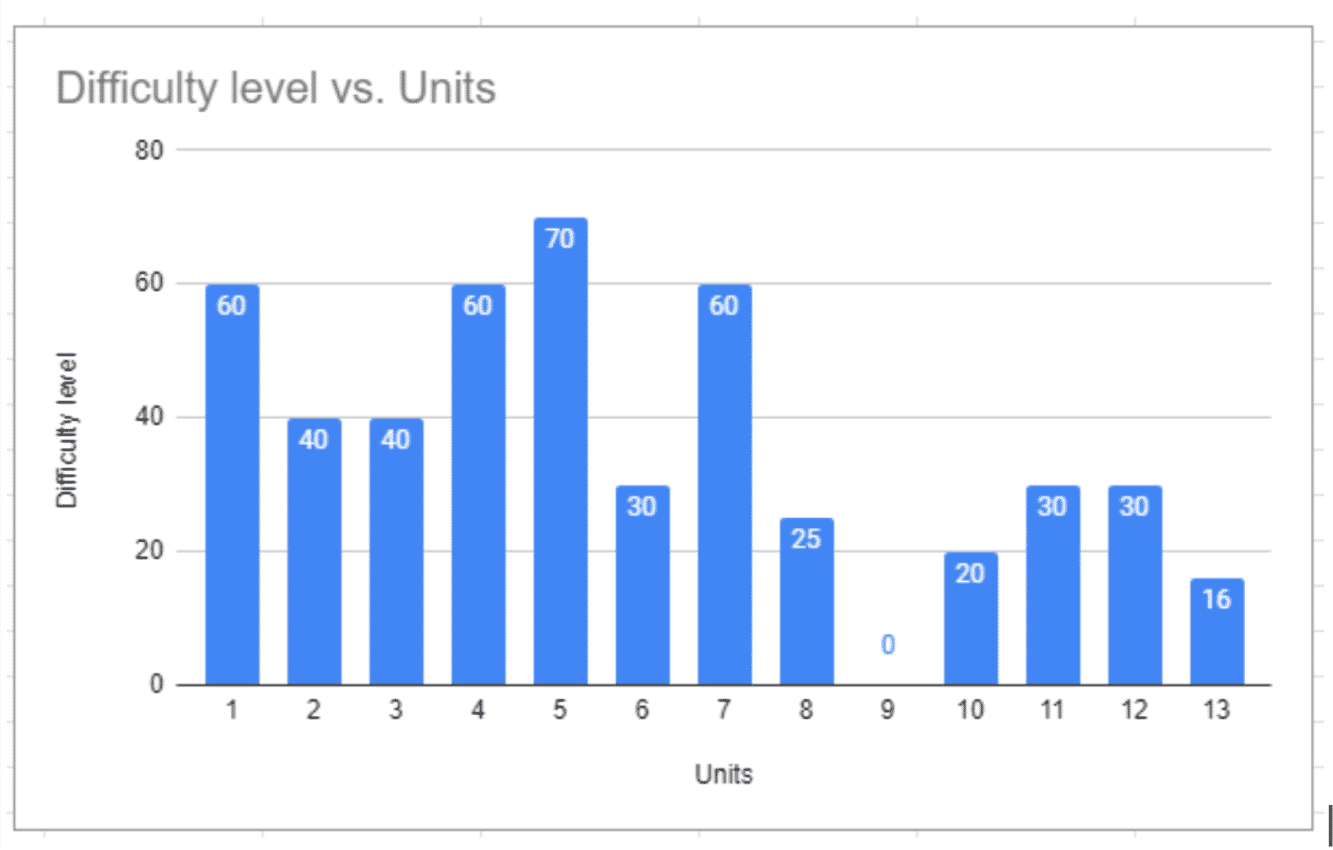CSIR 2020 Question Discussion – Paper Analysis + Free Downloads
CSIR NET June 2020 NTA Exam was conducted successfully on19th, 21st & 26th November 2020. for 2.62 Lakh candidates, covering 5 subjects in two shifts to determine the eligibility for Lectureship (LS)/Assistant Professorship in certain subject areas falling under the faculty of Science & Technology like Chemical Sciences, Earth, Atmospheric, Ocean and Planetary Sciences, Life Sciences, Mathematical Sciences, and Physical Sciences. The candidates who appeared in the test may log in to the website, using their application number and date of birth, and click the link for the display of their question papers and marked responses and the provisional answer keys.
Biotecnika brings you a complete analysis of the CSIR NET June 2020 exam in Life sciences. CSIR 2020 Question Discussion.
Key Points
- The Question and marks distribution was the same as the previous CSIR NET examinations.
- One can select any of the 3 parts A, B & C and start answering.
- For each part, the question numbers are provided in the right column, so one can go through all the questions of that part by selecting the question number, Or one can go through the entire paper from the start – there is a different option for that, where the entire question paper is available in a word file.
- The number of questions attempted, answered, marked for review, and answered but marked for review will be shown.
- One can also check on the instruction page during the examination, if required, and can also change their preferred language.
Watch CSIR N2020 Question Discussion Recorded Video Below
Major Highlights of June 2020 (November) CSIR Exam
- Wearing a mask/face cover was mandatory for all candidates. Hand sanitizer (small size) in a transparent bottle was allowed.
- Candidates were required to follow COVID 19 norms of ‘social distancing as well as ‘personal hygiene’ inside the Examination Halls/Rooms as well as on the premises of the Venue.
- Candidates were not allowed to leave the examination hall/room before the test was concluded.
- Candidates were required to bring Admit Card along with a passport size photograph affixed on it; One passport size photograph to be affixed on the attendance sheet; and ID Proof.
Overall Question CSIR NET 2020 Question Paper Analysis (Life Science)
CSIR 2020 Question Discussion
This time CSIR has maintained its high standards as well with a lot of analytical skills-based questions. CSIR NET Life Sciences paper was moderate in difficulty level. Part-B can be considered as moderate as most of the questions stipulate an in-depth knowledge of the subject. Questions from part-C were conceptual and logical in nature. Part-A was moderate in terms of difficulty level. There were not many application-based questions in the exam. Part C can be considered as moderate to difficult as the questions were analytical and reasoning based.
The Units that had the most difficult questions asked in CSIR June 2020(November) Examination.
Among the 13 Units, the majority of the students found 1,4 & 5 as the units from which most of the difficult questions were asked. From Unit 9, no questions were there this time.
CSIR NET June 2020(November) Question Paper Review – Unit wise:
Unit 1:- All types of questions(concept-based, numericals, graph/plot based) from enzymes were common this time. 2nd most asked topic was proteins, starting from the historical discovery of protein structures (scientist names) to their secondary structure, RP, denaturation, modifications, and even proteasome degradation. Apart from that questions based on carbohydrate metabolism, optical activity, the absorbance of proteins, amino acids (pka value-based), Gibbs free energy, trypsin digestion, nucleic acids, and techniques were given. The unusual topics of the question were amino acid synthesis. Questions from otherwise common topics like stabilizing interactions in macromolecules, pH buffer, lipids, nucleotide metabolism, and vitamins were not given this time.
Overall Difficulty level- 60%
Unit 2:-Many questions were asked from this unit in the recent exam covering almost all the subunits from unit 2. Almost 6- 7 ques appeared in Part B and nearly 4-5 ques in Part C. Emphasis were on topics like membrane structure and function, mechanisms of sorting and regulation of intracellular transport, Organellar structure, and function: cell wall, Golgi and Operon, chromatin banding patterns, transposons, Cell cycle. Both direct and complex questions were raised from these topics. Numerical based questions were framed from microbial growth. Part C consisted of statement-based questions where the merging of the cell cycle, cancer, and cell signaling concepts was observed.
The overall Difficulty level was 40 %
Unit 3:-If you had prepared unit 3 thoroughly, it might have been a jackpot for you as unit 3 offered 4- 5 Part B and approximately 7 – 8 questions in Part C which together makes a significant number of the total. Moreover, questions were almost direct and conceptual, framed mainly from Replication, DNA repair Transcription, Types, and functions of different RNAs and RNA polymerases, post-transcriptional processing; types of introns, splicing, post-translational modifications, translation inhibitors, regulation of gene expression i.e., gene silencing. Transcription/translation factors were almost dropped out.
The overall difficulty level was 40 %
Unit 4:-As expected several questions emerged from unit 4 covering primarily subunits B, C, and E. Moderate numbers of questions were raised from 4A. Few statement-based questions had an amalgamation of cancer and cell cycle concepts. Cell signaling and immunology remained as focused topics. Part B offered almost 5- 6 direct questions from the extracellular matrix, cell signaling mechanisms, and immunological concepts like Cells and molecules involved in innate and adaptive immunity, antibodies, inflammation, and activation and differentiation of B and T cells. Part C comprised 7 – 8 questions framed primarily from cell signaling and immunology. Part C questions from apoptosis, MHC molecules, B and T cell activation were tricky and required precise analysis of the question.
The overall difficulty level was 60 %
Unit 5:-Questions from this unit were both direct(straight forward) and conceptual(experiment-based). As expected, quite a lot of questions were asked about cell fate and axis formation of Amphibians, Drosophila, chick, and even C.elegans. There were also few questions from fertilization and organogenesis, especially limb development and antennapedia mutation. Apart from this, sex determination in drosophila and apoptosis in C. elegans was also asked. The question pattern of unit 5 has seen a change since the past 2 exams. Questions are not only asked from the basics terms and terminologies but also from gene pathways, functions, experimental result interpretation, and mutant analysis based.
Overall Difficulty level- 70%
Unit 6- Quite a lot of questions were there from Plant Physiology this time.A lot of important subtopics-include Photosynthesis, Respiration, NitrogenMetabolism, Hormones, SecondaryMetabolites, Stress Physiology, etc. The question level was not so difficult to attempt. Most of the questions were direct from the pathways from Photosynthesis(C4, C3, C2 Pathways) and secondary metabolism( Mevalonic acid pathway). Analytical and conceptual questions had come from Phytohormones and Sensory Photobiology.
Overall difficulty level-30%
Unit 7– This time from unit 7 as expected 4-5 questions were asked in Part C. Most of the questions (part B and part C) were from unit 7 B, C, D, and J. Some questions asked from endocrinology and reproduction were easy while the ones asked from the nervous system were tricky and difficult. Questions were set from the potential generated in the SA node and AV node, hemorrhage, oxygen saturation curve, the firing of the action potential, hormones involved in the reproductive system.
Overall Difficulty level- 60%.
Unit 8- Unit 8 questions asked this time were all mostly direct. About 4-5 questions were asked in Part C. The questions (Part B and C) were mainly set from Unit 8 sub-units C, D, F, G, H. The questions were mainly asked from topics of subunit C of unit 8 such as Genomic Imprinting, Epistasis, Overdominance, Incomplete dominance, Sex Limited trait. Questions from Gene Mapping were asked in both part B as well as part C and were very direct, simple formula based. Although questions based on Quantitative trait loci (QTL) were tricky. Questions were also asked from microbial genetics and pedigree analysis.
Overall Difficulty level -25%
Unit 9-There was no spectacular questions from this unit this time.
Unit 10- As per CSIR June 2020 Question Paper Unit, 10 was more or less scoring with questions from Resource partitioning, niche features, Life survivorship graph, population graphs, Co-existence in bird species, species interaction, and diversity. Students can.
Overall Difficulty level- 20%
Unit 11- There were not many questions from unit 11 this time. Hardly 2-3 questions combining parts B and C. Mainly the questions had come from the Oparin-Haldane experiment, Adaptive radiation.
Overall Difficulty level- 20%
Unit 12- This time no such spectacular questions were from this unit except for Agrobacterium tumefaciens.
Overall Difficulty level- 30%
Unit 13- As expected, mixed type questions (both in part B and C) were asked this time from Unit 13. Questions were mainly based on topics ELISA, Gene cloning, Molecular markers, Spectroscopy, Microscopy, DNA modifying enzymes, Radioisotope labeling, Restriction Enzymes, Sequencing, Southern blotting, based on monoclonal and polyclonal Antibody concept, 2D-gel electrophoresis. The questions asked were not difficult, overall the questions were very scoring. However, the question was also framed combining topics from two different units like immunology from Unit 4 and Flow cytometry from Unit 13. This time statistical-based questions were also asked in part C of the paper. The questions based on statistics were very direct.
Overall Difficulty level – 16%.
CSIR 2020 Question Discussion
Summary
Overall the CSIR June 2020 Question Paper pattern was analytical and skill-based and needed a lot of in-depth knowledge of the subject. The analytical or logical questions needed a thorough study of the current research updates of various journal papers apart from the subject textbooks. The format or the question pattern has remained the same from the last time. General Aptitude questions were relatively easier as compared to the previous year.
Suggestion for upcoming CSIR NET June 2021 exam aspirants:
- It is advised not to go through the whole set of question papers at the start of the exam. Instead, go part by part.
- Make the time distribution as(30 min for part A,1 Hr for part B, and 1.5 Hr for part C
- Even when you have selected a part, do not sit, and first, select the questions and then start answering. This was a common trend when it was an offline examination. But in this pattern, this approach will only kill time.
- Instead, start answering those questions which you are confident about. Since you can change the answer anytime there is no tension of marking the wrong one.
- So select your Part – advisable to start from Part C as it requires more time.
Time For FREE Downloads
Download CSIR NET 2020 Question Paper With Detailed Explanation (Morning Session)
Download CSIR NET 2020 Question Paper With Detailed Explanation (Afternoon Session)
Download CSIR NET June 2021 Exam Planner
CSIR 2020 Question Discussion, CSIR NET 2020 Exam Question Paper & Answer Key, the Difficulty level of CSIR 2020 Life science exam.

































Hi we want chemical Sciences questions paper
I want mathematics
I want physics, chemistry, advanced math
I need chemistry paper 2020
Mathematics save papers 2020